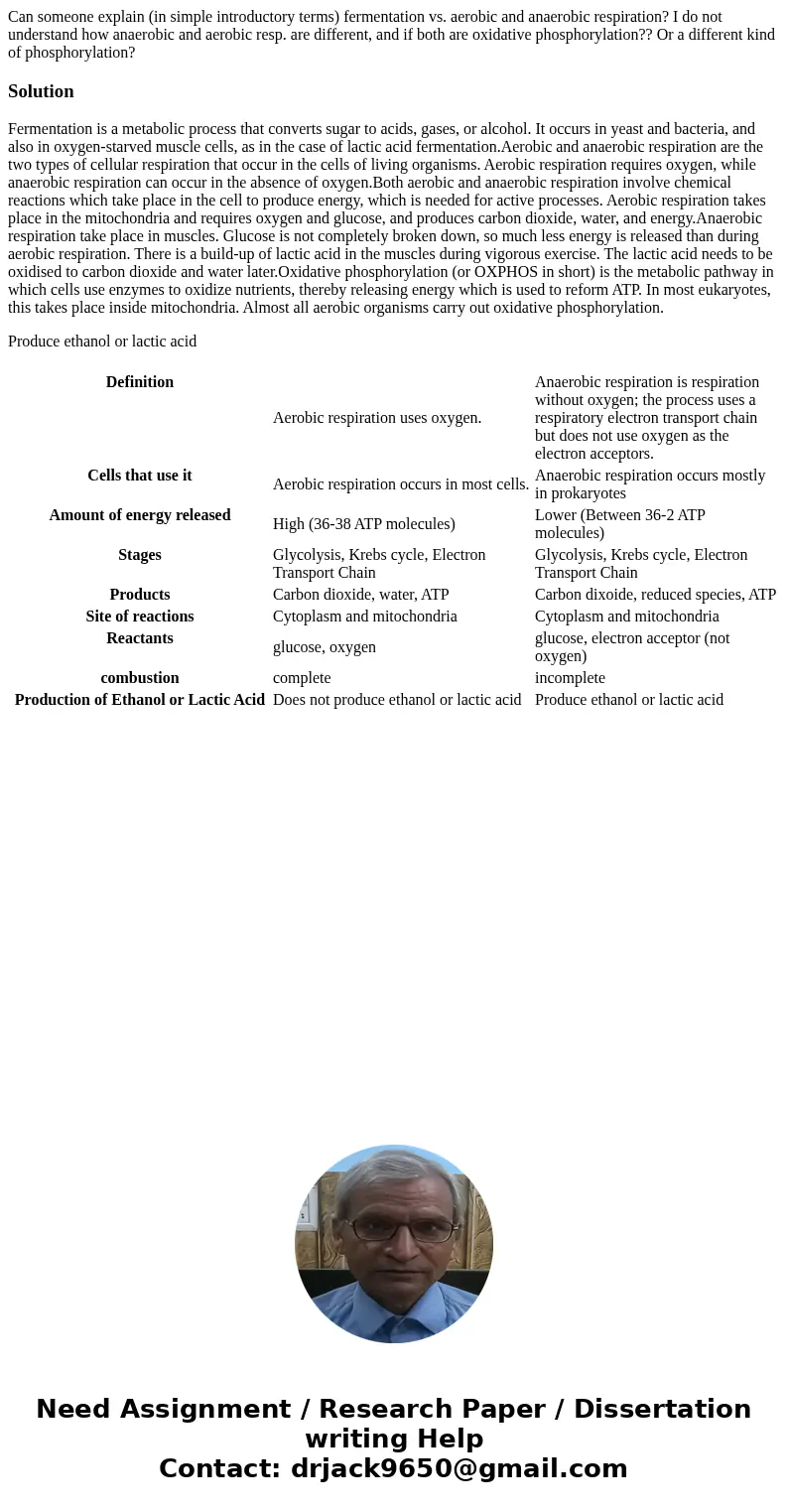Can someone explain in simple introductory terms fermentatio
Can someone explain (in simple introductory terms) fermentation vs. aerobic and anaerobic respiration? I do not understand how anaerobic and aerobic resp. are different, and if both are oxidative phosphorylation?? Or a different kind of phosphorylation?
Solution
Fermentation is a metabolic process that converts sugar to acids, gases, or alcohol. It occurs in yeast and bacteria, and also in oxygen-starved muscle cells, as in the case of lactic acid fermentation.Aerobic and anaerobic respiration are the two types of cellular respiration that occur in the cells of living organisms. Aerobic respiration requires oxygen, while anaerobic respiration can occur in the absence of oxygen.Both aerobic and anaerobic respiration involve chemical reactions which take place in the cell to produce energy, which is needed for active processes. Aerobic respiration takes place in the mitochondria and requires oxygen and glucose, and produces carbon dioxide, water, and energy.Anaerobic respiration take place in muscles. Glucose is not completely broken down, so much less energy is released than during aerobic respiration. There is a build-up of lactic acid in the muscles during vigorous exercise. The lactic acid needs to be oxidised to carbon dioxide and water later.Oxidative phosphorylation (or OXPHOS in short) is the metabolic pathway in which cells use enzymes to oxidize nutrients, thereby releasing energy which is used to reform ATP. In most eukaryotes, this takes place inside mitochondria. Almost all aerobic organisms carry out oxidative phosphorylation.
Produce ethanol or lactic acid
| Definition | Aerobic respiration uses oxygen. | Anaerobic respiration is respiration without oxygen; the process uses a respiratory electron transport chain but does not use oxygen as the electron acceptors. |
|---|---|---|
| Cells that use it | Aerobic respiration occurs in most cells. | Anaerobic respiration occurs mostly in prokaryotes |
| Amount of energy released | High (36-38 ATP molecules) | Lower (Between 36-2 ATP molecules) |
| Stages | Glycolysis, Krebs cycle, Electron Transport Chain | Glycolysis, Krebs cycle, Electron Transport Chain |
| Products | Carbon dioxide, water, ATP | Carbon dixoide, reduced species, ATP |
| Site of reactions | Cytoplasm and mitochondria | Cytoplasm and mitochondria |
| Reactants | glucose, oxygen | glucose, electron acceptor (not oxygen) |
| combustion | complete | incomplete |
| Production of Ethanol or Lactic Acid | Does not produce ethanol or lactic acid | Produce ethanol or lactic acid |

 Homework Sourse
Homework Sourse